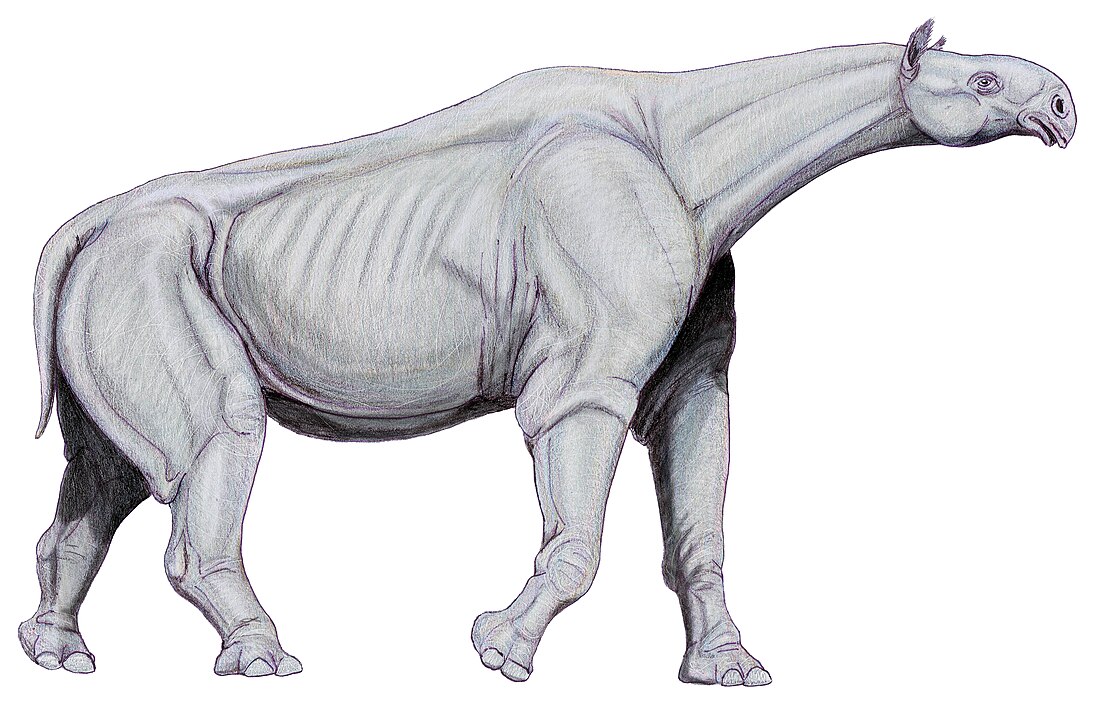巨犀屬(學名:Paraceratherium)為巨犀類下的一個屬,為一種已經滅絕的犀牛,生活在漸新世。巨犀也是目前已知最大的陸行哺乳動物,估計成年巨犀平均高5.2公尺(18呎),身長為8.2公尺(27呎),重約22噸,為植食性,巨犀使用似獠牙狀的上顎齒與下顎齒來覓食樹葉。
| 巨犀屬 化石時期:漸新世;
| |
|---|---|

| |
| 巨犀重建圖 | |
無效狀況
| |
| 科學分類 | |
| 界: | 動物界 Animalia |
| 門: | 脊索動物門 Chordata |
| 綱: | 哺乳綱 Mammalia |
| 目: | 奇蹄目 Perissodactyla |
| 科: | †巨犀科 Paraceratheriidae |
| 亞科: | †巨犀亞科 Paraceratheriinae |
| 屬: | †巨犀屬 Paraceratherium Forster-Cooper, 1911 |
| 模式種 | |
| †布格蒂巨犀 Paraceratherium bugtiense Pilgrim, 1908
| |
| 種 | |
| |

| |
| 異名 | |
|
屬異名
種異名
| |
詞源學
巨犀的屬名來自希臘語,Para意為「接近的」,A作為前綴,表示「沒有的」,Ceras意為「角」,therium意為野獸,整個屬名大意為「接近無角犀的野獸」。巨犀的模式種Paraceratherium bugtiense種名取自出土地——德拉布格蒂(Dera Bugti)山丘地區,人們在那裏首次出土巨犀的化石。[1]
-
P. transouralicum 頭顱骨化石。
參考文獻
外部連結
Wikiwand in your browser!
Seamless Wikipedia browsing. On steroids.
Every time you click a link to Wikipedia, Wiktionary or Wikiquote in your browser's search results, it will show the modern Wikiwand interface.
Wikiwand extension is a five stars, simple, with minimum permission required to keep your browsing private, safe and transparent.


